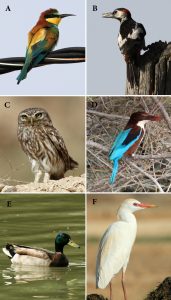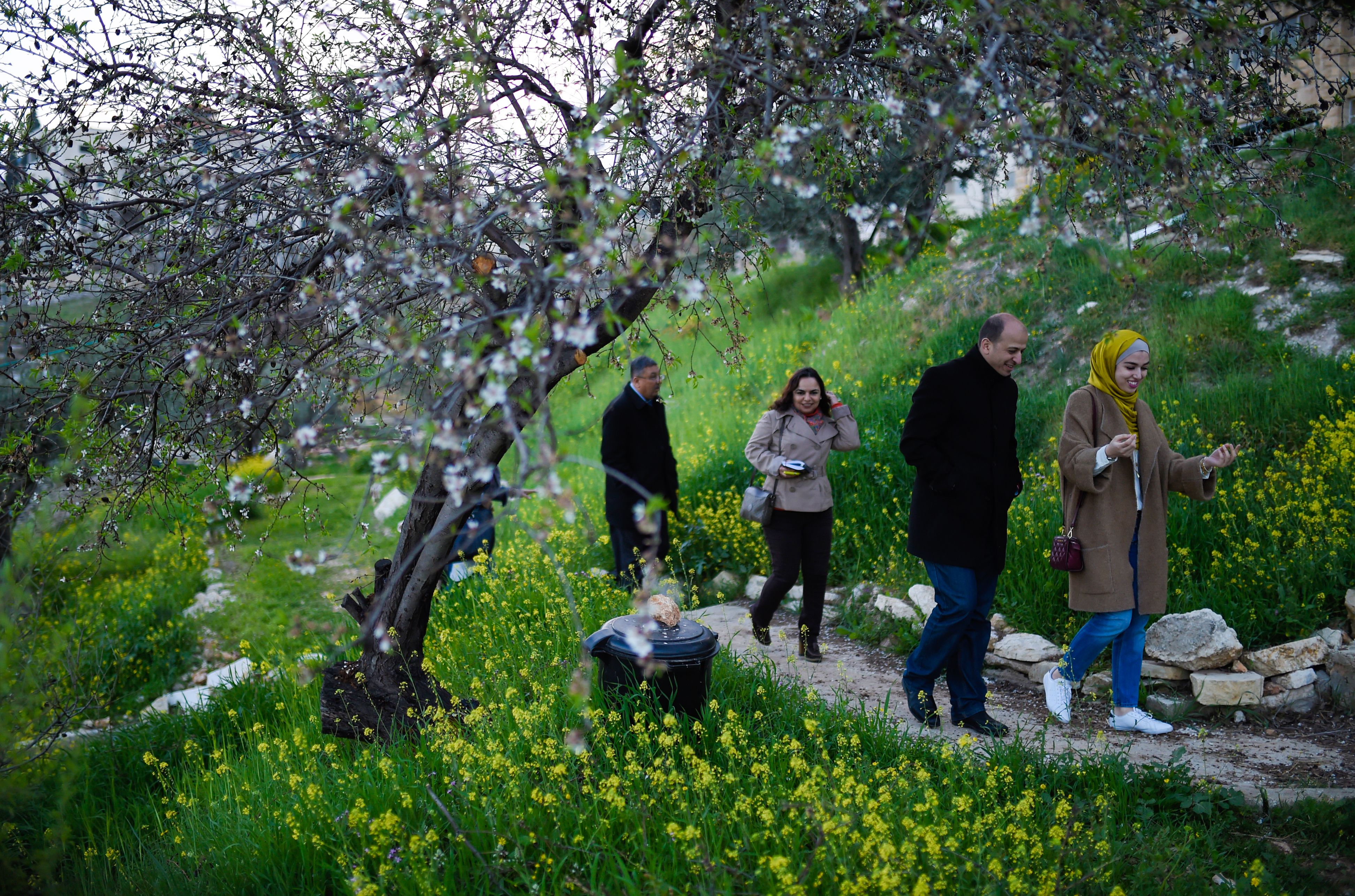Nature Conservation
There are 8.7 million species of animals and 400,000 species of plants in the world. There are also estimates of millions of species of fungi and other life forms. The exact numbers are unknown as there are so many to be described and many are going extinct before scientists even know they exist. For example while 130,000 species of fungi (mushrooms and the likes) have been described, there are estimates of 2-3 million species of those remaining to be described.
Our work contributes towards these United Nations Sustainable Development Goals: Goal 4 Quality education. Goal 12 Responsible consumption and production; Goal 13 Climate action; Goal 14: Life below water; and Goal 15 Life on land.
OUR CONSERVATION ACIEVEMENTS
- Signed Memorandum of Understanding with the Environment Quality Authority in 2020 which accelerated our collaborations especially in conservation issues.
- Wrote the National Report for the Convention on Biological Diversity. This was technically the first required report (a preliminary report was submitted after Palestine signed the convention in 2015).
- Entrusted by the State of Palestine to lead the construction of the National Biodiversity Strategy and Action Plan (NBSAP) 2023-2025.
- Led on-the ground efforts to create a new Protected Areas Network which was then approved by IUCN and the Palestinian government.
- Represented Palestine at some Conferences of Parties (COPs) for the both the climate change convention and the convention on biological diversity. Working with various groups, especially from the global South, we try to make a difference in global agendas.
- Worked on conservation through restoration of key habitats critically selected at three sites in the Al-Makhrour valley. The restoration action focused on improving ecological functionality, preventing soil erosion and enhancing carbon dioxide absorption on site - Almakhrour
- Started the [Palestine Action for the Planet] (PAP).
- Rescued numerous threatened animals, including mammals like foxes, hyenas, European badgers, mongooses (Martins), bats, and various birds such as golden eagles, eagle owls, black kites, crows, and reptiles like snakes through our Animal Rehabilitation Unit (ARU).
- Assisted in adding Battir to UNESCO World Heritage Site.
- Started an ex-situ conservation unit within the PIBS Botanical Garden which houses six iris species and 19 orchid species.
- Conserved the Jinsafut pond by showing that it contains rare species such as Syrian spadefoot toad (Pelobates syriacus), the Pond Water-crowfoot (Ranunculus peltatus) and the duckweed (Lemna minor). The EQA adopted our management plan and designated the area as a protected habitat.
- Reexamine environmental laws, policies, regulations, and international treaties (signed or unsigned) by the state of Palestine.
- Worked with the Ministry of Tourism and local Al Makhrour communities to create a marketing plan for many communities (eco-friendly business plan that includes ecotourism and agricultural tourism).
- Created several management plans for protected areas such as for Wadi Al-Zarqa Al-Ulwi, Wadi Al-Quff, Wadi Al-Makhrour and Wadi Qana.
- Developed and utilized alternative energy at our institute such as the use of biogas and solar energy, composting (including compost toilet, vermiculture, and regular composting), aquaponics & hydroponics, and rain harvesting systems.
- Held two global conventions on Biodiversity and Human Diversity, the first of their kind in Palestine, as well as a Biodiversity Conservation Conference.
- Held workshops on cultural and natural heritage conservation.
- Published many papers on conservation (check our research page)
- Engaged in community service activities that benefited >650 families. For examples: Supported 81 households farmers (22 in Husan, 20 in Battir, 13 in Al Walaja, and 26 in Beit Jala) and trained them on eco-friendly agriculture resulting in an increase of output by 31% on average while reducing costs (not using chemical pesticides and fertilisers). They received seeds and 87000 seedlings and produced approximately 11.4 tons of vegetables; Supported women households in four communities through four grants (£4000 each) to four existing/new women business groups; Trained 12 engineers from Gaza on building and utilizing aquaponics and hydroponics systems. ; Processed over 2700 patient cytogenetic samples. These include patients with congenital abnormalities, infertility, those with spontaneous abortions, and cancer. Nominal fees were collected from patients to cover costs but we also offered discounts to those who could not afford the tests.
- Developed a database of environmental injustice in the Palestinian Occupied Territories and created a report on impact of the Israeli occupation on the environment in the West Bank. This report
 Some birds recorded from the Wadi Zarqa protected area. A. European Bee-eater. B. Syrian Woodpecker. C. Little Owl. D. White-throated Kingfisher. E. Mallard. F. Cattle Egret. Photos by A. Khalilieh
Some birds recorded from the Wadi Zarqa protected area. A. European Bee-eater. B. Syrian Woodpecker. C. Little Owl. D. White-throated Kingfisher. E. Mallard. F. Cattle Egret. Photos by A. Khalilieh
Diversity of fauna and flora in Palestine
According to the Environment Quality Authority, Palestine has about 3% of the global biodiversity which is very high for the small size of the country and for the latitude (of course tropical areas have higher biodiversity). While much more studies are needed and are being done by our team and others, this is what is known about species diversity in our area. Our area is designated a mediterranean biodiversity hotspot. There are some very interesting endemic and exotic fauna and flora in our area (see Living national treasures)
Numbers are for historic/geographic Palestine and in parenthesis for West Bank and Gaza (Occupied Palestinian Territoris)
- Mammals: 116 (98)
- Birds: 578 (373)
- Reptiles: 97 (>81)
- Amphibians: 9 (5)
- Marine Fish: 1700 (297)
- Freshwater fish: >30 (>15)
- Plants: 2959 (2076)
- Invertebrates: >30,000 species with many still to be described
Additionally there are invasive species: two mammals, 20 bird, two reptile species, 1 fish, dozens of invertebrate species (especially insects that came with food products) many plant species. Note that some Israeli studies include the Golan, an illegally occupied and annexed Syrian territory and not part of the geographic area of Palestine. These are excluded here.
The Convention on Biological Diversity adopted at the Earth Summit Conference in Rio de Janeiro, Brazil, highlighted three key principles: conservation of biological diversity, sustainable use of nature, and fair and equitable sharing of the benefits. Our work shows the value of combining basic research with education and conservation and with collaboration between academia, NGOs, and government officials and succeeding with limited resources. Much more remains to be done. We have limited resources and human capacity so we welcome collaborations and support both from local and global activists to help us protect our shared blue planet. Environmental challenges facing our planet are unprecedented and facing them requires global efforts. These challenges are compounded in developing countries because of economic, education, and political issues. Palestine is unique in its position geographicaly at intersection of continents. This is combined with the geologic history due to tectonic plate movements that created the great rift valley (with the lowest point on earth at the Dead Sea) and a series of mountains from the Galilee to the Hebron mountains creating a very rich biodiversity for a very small area. Yet, Palestine was subjected to decades of de-development, lack of Palestinian sovereignty over natural resources, and politics . Significant demographic shifts developed in the past several decades of Israeli-Palestinian conflict. Habitat destruction and environmental declines are notable (see research papers). But the question remains is there little to be done on the environmental and science front while we wait for the political situation to get resolved?
PIBS focuses on environmental conservation after doing the appropriate research and engaging in education that build capacity for conservation. PMNH/PIBS launched an Environmental Assessment Unit with oversight by experts. We are also highly engaged in citizen actions such as our program Palestine Action for the Planet.
For details on Conservation issues in Palestine we (MB Qumsiyeh and ZS Amr edited by Hans Seidel Foundation) published a report titled “Environmental Conservation and Protected Areas in Palestine: Challenges and Opportunities” (2017, available here). For public databases, please follow this link.
Also here is a link to a summary of a database of environmentl injustice issues

Example Conservation Projects at PIBS/PMNH-BU
- Darwin Initiative funded project to conserve Al-Makhrour Valley. See Final Report and this website
- National Geographic Society project
- See Research for list of published material and this story that made the cover of Bethlehem University Magazine
- See the effect of our work, please see This Letter from UNESCO and here is a report on our community activities and a Sample Presentation on the biodiversity
- Two conservation projects done in 2017 "Models of Sustainability at Bethlehem University" (Funded by Canada Fund for Local Initiatives" and "Empowering Youth in Environmental Stewardship" (Funded by US Consulate).
- Wadi Al-Quff protected area biodiversity and management plan (cooperation with EQA and IUCN). Six papers were published in one issue of the Jordan Journal of Natural History as a result of this work and these papers are available HERE
- Buffer Zone for Wadi Qana Protected area (funded by Royal Belgian Institute of Natural Sciences). Report available here an it focuses on a temporary rainfall pond near Jinsafut and the ocally endangered toad Pelobates syriacus. The final technical report can be read here
- Wadi Al-Zarqa Al-Ulwi Protected Area near Salfit including not only survey of fauna and flora but also analysis of threats and designing plan of action and engaging local communities (including school students) in conservation issues. That work is available here: WadiZarqaTechnical. The total beneficiaries were 493, including 200 students (more than 50% female) and 293 adults. The two objectives accomplished via education were: a) increased environmental awareness and behavioral change to conserve ecosystems in WZU, and b) introduced methods that improve people’s lives and the economy via things like permaculture, recycling, upcycling, and composting (many started implementing these practices).
- Project for a protected community Garden, Playground, and Native Botanical Garden at museum ground. Funded by various Sources including Rotary Club and Equestrian Order
- Climate Change Education in Palestine. In collaboration with zoinet.org, Action de sensibilisation et d’éducation à l’environnement et le changement climatique pour les communautés en Palestine. $16,000. by City of Geneva (for execution in Palestine).Jan. 2018 – Dec. 2019. You can download some of the educational material here
- Building the Capacity to Protect Palestinian Land and Heritage through Museology and Eco-Tourism. British Council.Sept 2018 – August 2019. For more information, see This link the outut of this project is also an intangible cultural heritage website
- Biodiversity Conservation in Al-Makhrour Valley, Bethlehem, Palestine. National Geographic Society. June 2018 – May 2020 (see this short film and this article in BU Magazine on page 9).
- Biodiversity Conservation and Community Development in Al-Makhrour Valley in Bethlehem, Palestine. Darwin Fund. Sept 2018-August 2021. See this link for project website.
- Unity and diversity in human societies and nature. Funded by EU peacebuilding initiatve. 2020-2022 (three years) in partnership with Galilee Society and Palestinian Center for Rapprochement between people.
Resources
- Environment Quality Authority
- http://flora.org.il/plants
- https://avibase.bsc-eoc.org/checklist.jsp?region=IL
- https://www.biogis.huji.ac.il/eng/about.html
- Goren 1974 (freshwater fish)
- Qumsiyeh 1996 Mammals of the Holy Land
- Fauna Palestina series (published by Israel Academy of Sciences)
- Meiri, S., Belmaker, A., Berkowic, D., Kazes, K., Maza, E., Bar-Oz, G. and Dor, R., 2019. A checklist of Israeli land vertebrates. Israel Journal of Ecology and Evolution, 65(1-2), pp.43-70.
- Roll, U., Dayan, T. and Simberloff, D., 2008. Non-indigenous terrestrial vertebrates in Israel and adjacent areas. Biological Invasions, 10(5), pp.659-672.
- Roll, U., Dayan, T. and Simberloff, D., 2007. Non-indigenous insect species in Israel and adjacent areas. Biological Invasions, 9(6), pp.629-643.
- Roll, U., Dayan, T., Simberloff, D. and Mienis, H.K., 2009. Non-indigenous land and freshwater gastropods in Israel. Biological Invasions, 11(8), pp.1963-1972.


